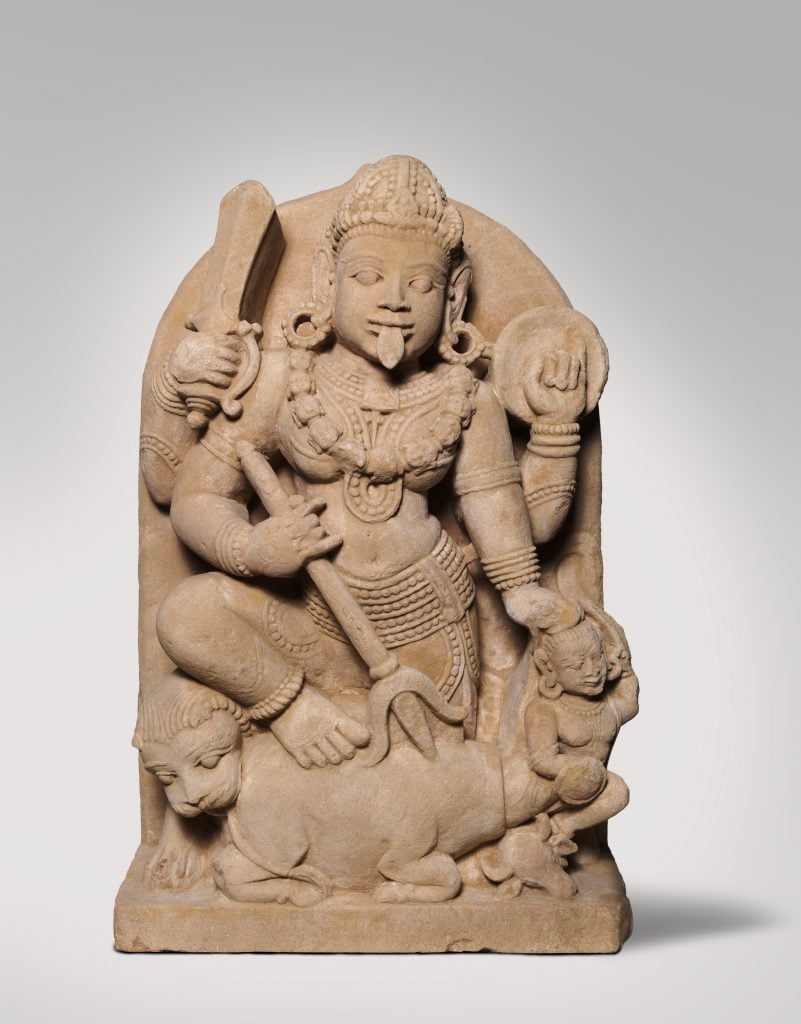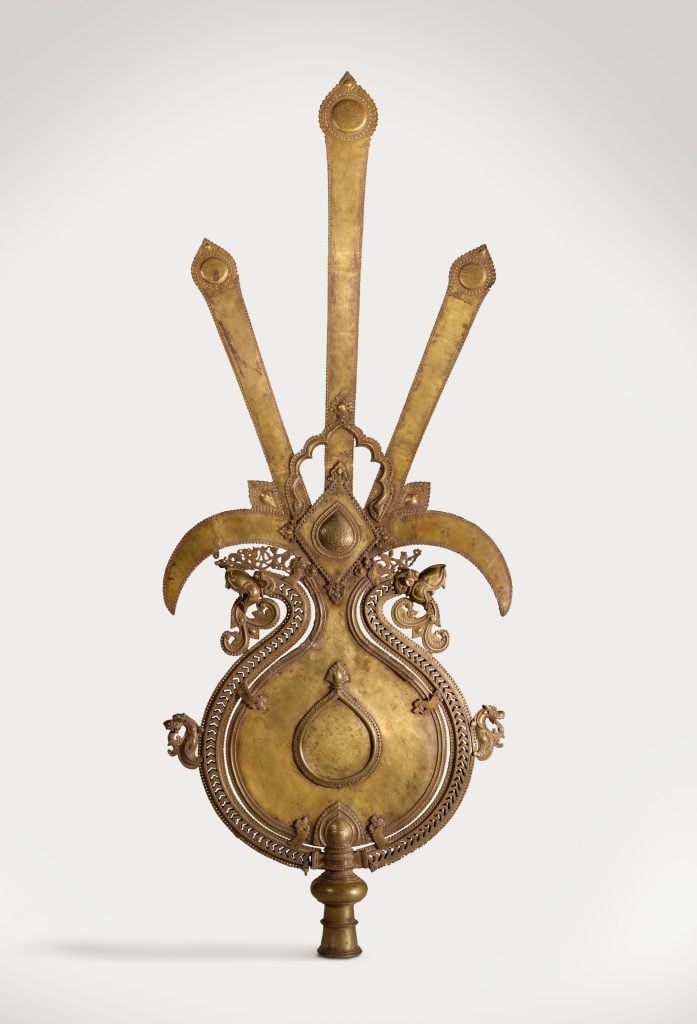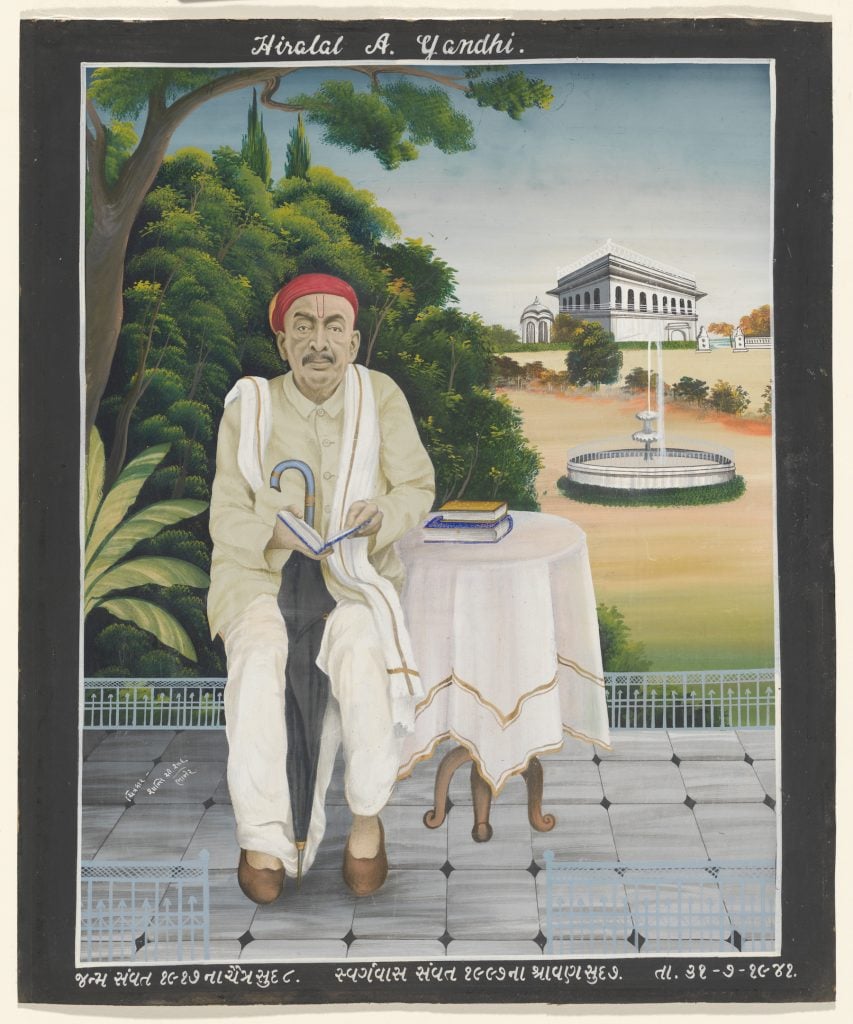Museums & Institutions
The National Gallery of Australia Returns to India 13 More Works Bought From Now-Imprisoned Art Dealer Subhash Kapoor
The museum also officially outlined its new guidelines for repatriating art.

The museum also officially outlined its new guidelines for repatriating art.

Taylor Dafoe

Today, the National Gallery of Australia (NGA) announced that it will repatriate 14 works of Asian art and antiquities to the Indian Government. All but one of the pieces came from Subhash Kapoor, the disgraced art dealer believed to be behind an elaborate smuggling operation.
The soon-to-be deaccessioned objects include six bronze or stone sculptures, most of which date back to the 11th or 12th century; six photographs; a painted scroll from 1835; and a brass processional standard, or alam, created in 1851.
Additionally, another three objects acquired through Kapoor’s Art of the Past gallery in New York have been removed from view and will be returned once the museum can identify their respective places of origin. Once these artworks have been repatriated, the institution’s collection will no longer contain any items connected to Kapoor.
National Gallery director Nick Mitzevich described the move as “the right thing to do” in the official statement, adding, “it’s culturally responsible and the result of collaboration between Australia and India.”
With today’s announcement, the museum also introduced its new system for assessing the provenance of artworks. “If, on the balance of probability, it is considered likely that an item was stolen, illegally excavated, exported in contravention of the law of a foreign country, or unethically acquired, the National Gallery will take steps to deaccession and repatriate,” the museum explained.
“With these developments, provenance decision-making at the National Gallery will be determined by an evidence-based approach evaluated on the balance of probabilities, anchored in robust legal and ethical decision-making principles and considerations,” Mitzevich added.

A bronze processional standard, or alam, from 1851. Courtesy of the NGA.
This marks the fourth time the NGA has deaccessioned to the Indian government works purchased through Kapoor and others connected to him, per the Guardian.
The first occasion came in 2014, when the institution returned an 11th-century Chola-period bronze sculpture, reportedly purchased for $5.6 million six years earlier. In 2016, the museum repatriated a third-century limestone carving and a 12th-century stone sculpture. Finally, in 2019, the NGA gave back two 15th-century door guardians and a sculpted figure dating back to sometime between the sixth and eighth centuries.
One of the most prominent antiquities smugglers in the world, Kapoor allegedly dealt hundreds of millions of dollars worth of looted artworks over the course of three decades. Many went to the world’s biggest museums, including the Metropolitan Museum of Art in New York and the Los Angeles County Museum of Art in California.

Shanti C. Shah, Hiralal A Gandhi memorial portrait (1941). Purchased 2009. Courtesy National Gallery of Australia, Canberra.
After a years-long investigation codenamed Operation Hidden Idol, Kapoor was arrested in Germany in 2011, then extradited to his home country of India where he has remained imprisoned since, awaiting the completion of his trial.
In 2019, the Manhattan District Attorney’s Office filed criminal charges against Kapoor and seven co-conspirators, charging them with operating a $145 million smuggling ring over the course of three decades.
The full list of the returned works, as provided by the museum, is below: